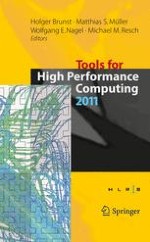2012 | Buch
Tools for High Performance Computing 2011
Proceedings of the 5th International Workshop on Parallel Tools for High Performance Computing, September 2011, ZIH, Dresden
herausgegeben von: Holger Brunst, Matthias S. Müller, Wolfgang E. Nagel, Michael M. Resch
Verlag: Springer Berlin Heidelberg
